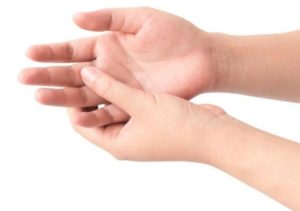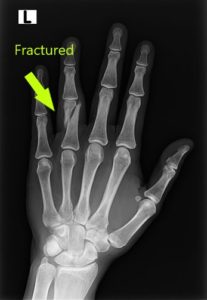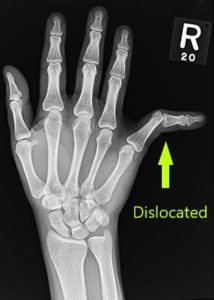Fractures and Dislocations

Fractures and dislocations can occur when a high force impacts against our body. A fracture is an umbrella term that encompasses all breaks of a bone, whether they be small, large, complete or penetrating through the skin. A dislocation is when a joint is forced out of it’s regular position, causing the joint to stick out at a funny angle. Dislocations usually cause injury to the surrounding ligaments or tendons of the joint. Smaller fractures may not cause visible deformity, and require an X-ray to be diagnosed. Some people can sustain a fracture and dislocation at the same time.
SYMPTOMS OF A FRACTURE:
- Pain localised to a particular area, with or without deformity
- Swelling
- Bruising
- If in the finger, the finger may look to be in an awkward position or bend in an usual way when moved
Most people can still move their fingers or hand when a fracture is present. Being able to still move your hand is not a reliable indication that you haven’t sustained a fracture
SYMPTOMS OF A DISLOCATION:
- The joint may be sticking out at a funny angle
- The joint may or may not pop back into it’s usual position easily
- Pain
- Swelling
- Reduced range of motion – If a joint remains dislocated, it will not be able to move as the joint is not in the correct position. If a joint was dislocated but then put back into place, movement can occur but may be painful
TREATMENT:
If a fracture or dislocation is suspected, an X-ray should always be done to check the extent of the fracture, the alignment of the bones and whether a joint is properly in the right position. Patients should never try to put a dislocated joint back into position themselves – you should always seek medical assistance and have the joint relocated by a medical professional. In severe cases, surgical intervention is required to re-align bones correctly or repair ligaments or tendons that have been torn. Following the diagnosis of a fracture or dislocation, treatment may involve:
- Protective splinting
- Provision of exercises to return range of motion to the area, when safe to do so
- Swelling management
- Wound and scar management after surgery
- Strengthening


We're here to help!
Geelong, Vic 3220
Appointments:
Geelong
Mon to Fri: 8:30am to 5pm
Torquay
Mon: 8:30am - 4pm
Tues: 8:30am - 5pm
Thurs: 8am - 4pm
